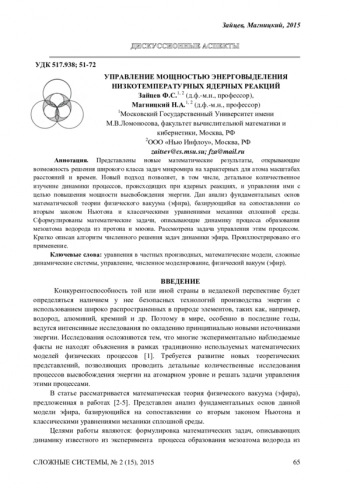Представлены новые математические результаты, открывающие возможность решения широкого класса задач микромира на характерных для атома масштабах расстояний и времен. Новый подход позволяет, в том числе, детальное количественное изучение динамики процессов, происходящих при ядерных реакциях, и управления ими с целью повышения мощности высвобождения энергии. Дан анализ фундаментальных основ математической теории физического вакуума (эфира), базирующийся на сопоставлении со вторым законом Ньютона и классическими уравнениями механики сплошной среды. Сформулированы математические задачи, описывающие динамику процесса образования мезоатома водорода из протона и мюона. Рассмотрена задача управления этим процессом. Кратко описан алгоритм численного решения задач динамики эфира. Проиллюстрировано его применение.
The new mathematical results are presented, which open a possibility of solving the wide class of microcosm problems at the scales of the atom distances and times. The new approach allows detailed quantitative study of the nuclear reactions dynamics and control this processes with the aim to increase the power of energy release. The analysis of the fundamentals of the mathematical theory of physical vacuum (ether) is given, based on a comparison with the Newton’s second law and classical equations of continuum mechanics. The mathematical problems are formulated, describing the dynamics of the hydrogen mesoatom formation from proton and muon. The problem of controlling this process is considered. A brief description of the algorithm for numerical solution of the problem of the ether dynamics is given and its application is illustrated.







